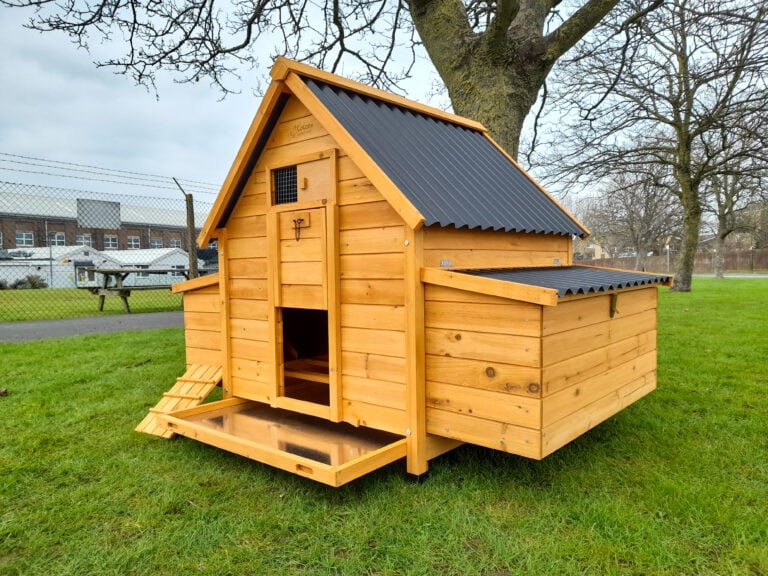This entry was posted on 11 February 2025 in Keeping Chickens.
At times, we receive concerns from customers about mould developing inside their chicken coops. While occasional leaks can be a cause, the most common reason is actually poor coop management. The good news? With the right approach, you can easily prevent mould and keep your coop fresh, dry, and healthy for your chickens.
In this guide, we’ll explain why mould forms, how it affects your chickens, and simple steps you can take to stop it from becoming a problem.
Mould thrives in damp, warm, and poorly ventilated environments. When moisture gets trapped inside the coop—whether from spilt water, condensation, or wet bedding—it creates the perfect conditions for mould growth. Here are some of the most common causes:
✅ Poor ventilation – Without enough airflow, moisture builds up inside the coop.
✅ Wet bedding – Damp straw or wood shavings create an ideal breeding ground for mould.
✅ Leaky roofs or walls – Water getting in from rain or damp conditions can encourage mould.
✅ Poor cleaning routine – If bedding isn’t changed regularly, it holds moisture and bacteria.
Mould isn’t just unsightly—it can be harmful to your chickens’ health. Breathing in mould spores can lead to respiratory problems, weaken their immune systems, and even cause conditions like aspergillosis, a fungal infection that affects their lungs.
Chickens are naturally hardy animals, but a damp, mouldy environment can make them more vulnerable to illness. That’s why preventing mould is one of the best things you can do to keep your flock healthy.
The key to a mould-free coop is keeping it dry and well-ventilated. Here are some easy and effective ways to achieve this:
Fresh air is essential! Make sure your coop has ventilation holes or mesh panels near the roof to allow moisture to escape. In damp weather, consider opening the door for short periods to improve airflow.
A leaking roof is one of the biggest causes of dampness in a chicken coop. If you’ve experienced issues with wooden roofs absorbing moisture and encouraging mould growth, it might be time to upgrade to a coop with a more weather-resistant design.
The Cocoon ECO 10002N Chicken House is a fantastic option. Built from high-quality wood with ECO plastic roofs, it offers excellent protection against rain while ensuring your flock stays safe, secure, and dry. The plastic roofing prevents water absorption, reducing the risk of mould while still allowing for proper airflow.
Perfect for 6-8 standard hens or up to 10 bantams, this durable coop is designed to provide years of outstanding value and peace of mind—keeping your chickens comfortable in all weather conditions.
Choose bedding materials like pine shavings or hemp that absorb moisture well and dry quickly. Avoid hay or straw, as they tend to retain moisture and grow mould easily.
A dirty coop = a damp coop. Remove soiled bedding daily, do a full clean-out weekly, and disinfect the coop at least once a month to keep mould at bay.
Water spills are a common culprit for mould growth. Place drinkers on a raised platform to prevent spills soaking into the bedding. Ensure food is stored in a dry, well-ventilated area.
Sprinkling diatomaceous earth or agricultural lime on the coop floor can help absorb excess moisture and keep the environment drier.
Mould in chicken coops is preventable with a few simple management changes. By keeping your coop dry, clean, and well-ventilated, you’ll create a healthier home for your chickens—free from harmful mould and bacteria.
If you’re ever unsure or need advice on keeping your coop in top condition, feel free to reach out to us. We’re always happy to help!
Looking for a weather-resistant, high-quality coop? Check out our Cocoon ECO 10002N Chicken House—designed to keep your flock safe, dry, and comfortable in all seasons.

« Where to Build Your Backyard Chicken Coop
Eco Big Barn Chicken House: Bigger, Better, and More Practical! »